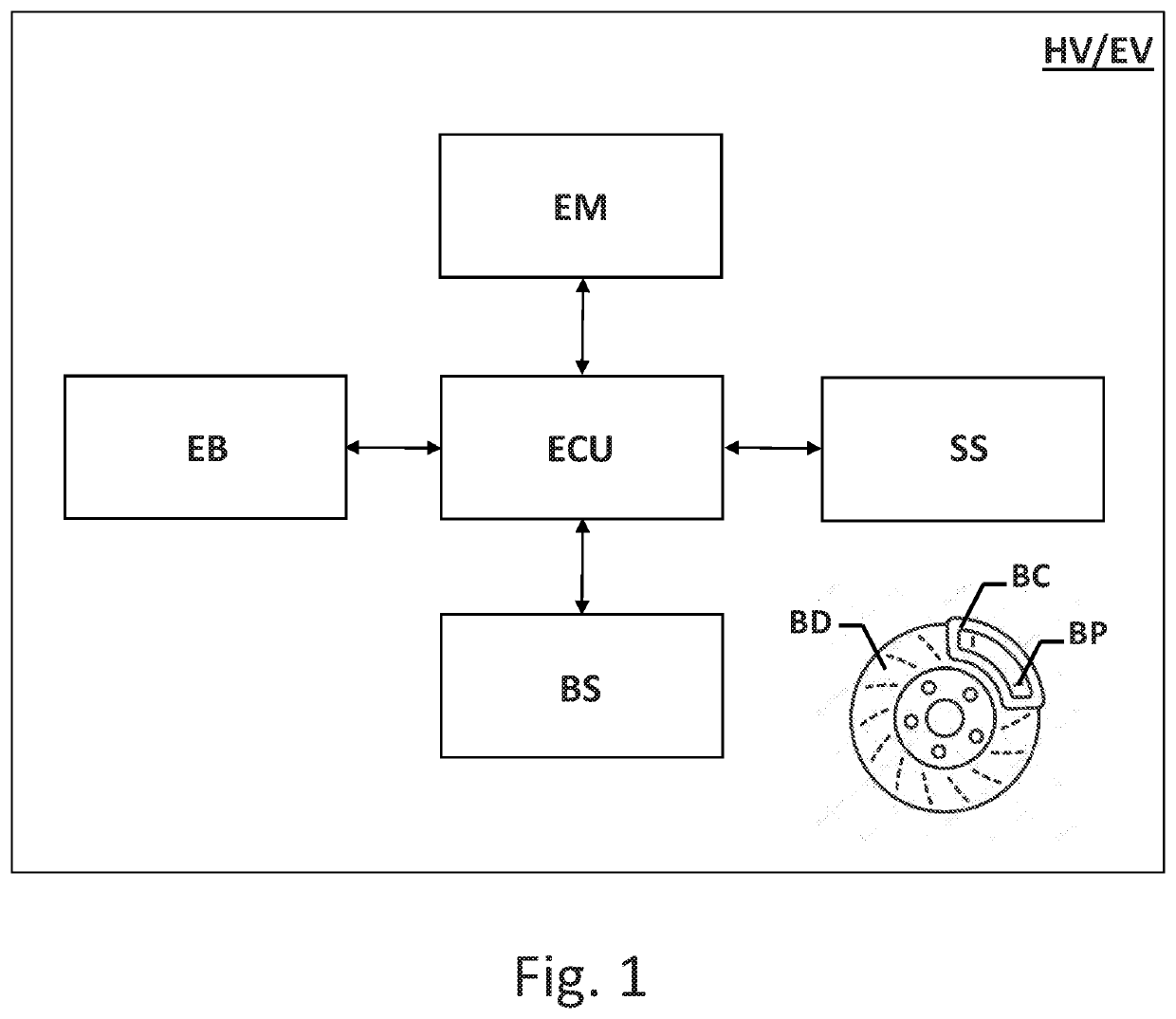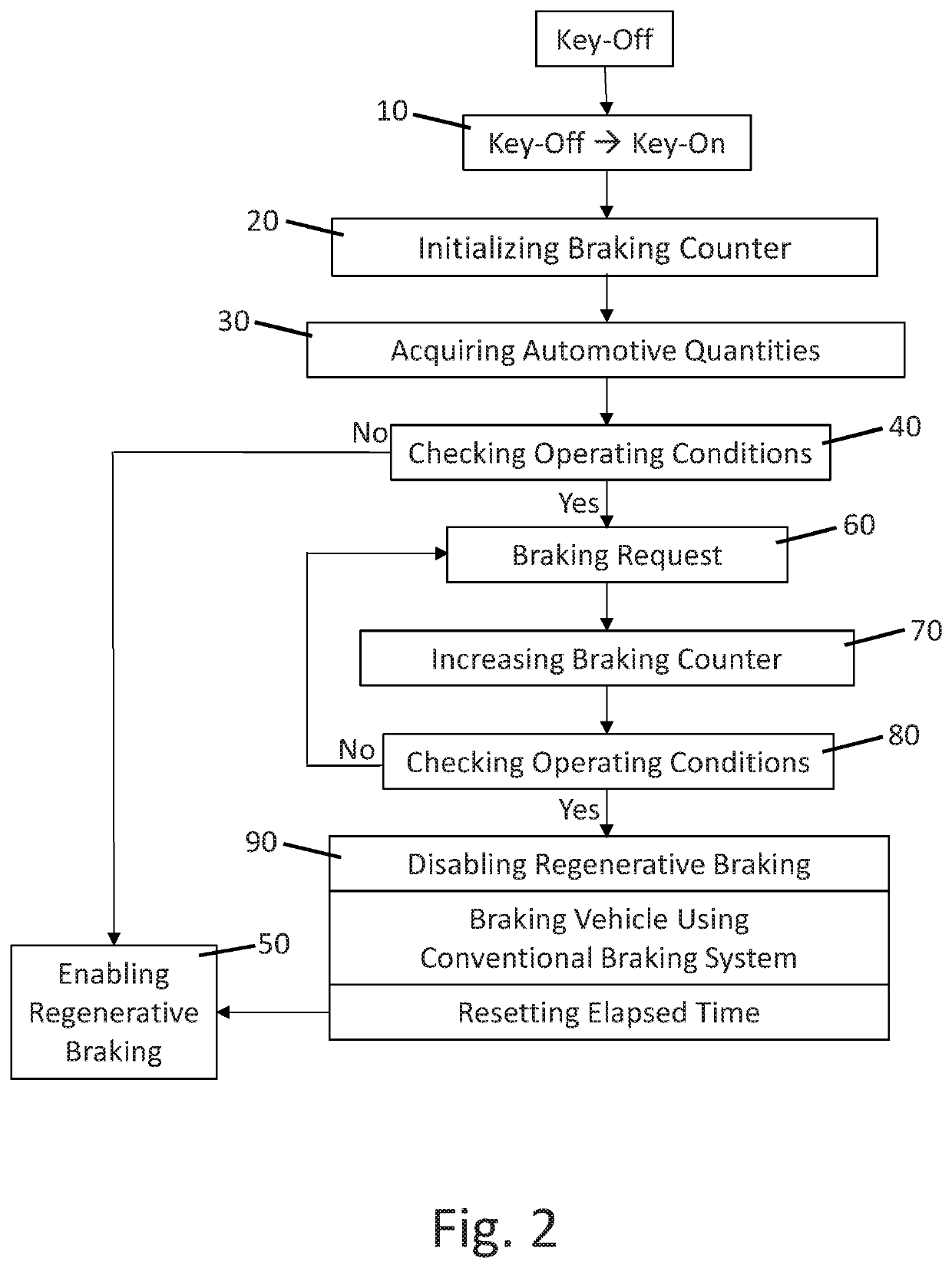Management of the cleaning of friction bodies of automotive braking systems
a technology for cleaning friction bodies and automotive braking systems, applied in the direction of braking systems, electric devices, braking components, etc., can solve problems such as certain degree of complexity, and achieve the effect of saving energy
- Summary
- Abstract
- Description
- Claims
- Application Information
AI Technical Summary
Benefits of technology
Problems solved by technology
Method used
Image
Examples
Embodiment Construction
[0031]The present invention will now be described in detail with reference to the attached figures to allow a person skilled in the art to reproduce and use it. Various modifications to the described embodiments will be immediately apparent to the persons skilled in the art. The generic principles described can be applied to other embodiments and applications without departing from the scope of protection of the present invention as claimed in the attached claims.
[0032]Therefore, the present invention should not be considered limited to the described and illustrated embodiments, but it must be accorded the widest protective scope in accordance with the described and claimed features.
[0033]Where not defined otherwise, all the technical and scientific terms used herein have the same meaning commonly used by the persons skilled in art pertaining to the present invention. In the event of a contention, this description, including the definitions provided, will be binding. Furthermore, th...
PUM
 Login to View More
Login to View More Abstract
Description
Claims
Application Information
 Login to View More
Login to View More - R&D
- Intellectual Property
- Life Sciences
- Materials
- Tech Scout
- Unparalleled Data Quality
- Higher Quality Content
- 60% Fewer Hallucinations
Browse by: Latest US Patents, China's latest patents, Technical Efficacy Thesaurus, Application Domain, Technology Topic, Popular Technical Reports.
© 2025 PatSnap. All rights reserved.Legal|Privacy policy|Modern Slavery Act Transparency Statement|Sitemap|About US| Contact US: help@patsnap.com


